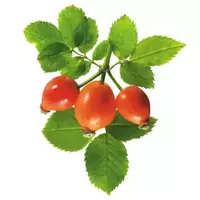Rosehip leaves

People learned about the unique properties of rose hips leaves in ancient times. For thousands of years, such a plant as rosehips has been used in folk medicine to treat various types of diseases. In its biological essence, rosehip or Rósa belongs to the Pink family. Currently, science has studied about 140 species of rose hips.
Moreover, these species unite countless varieties of the plant. Experts say that nowadays there are over fifty thousand different varieties of rose hips. Rosehip is a shrub, often evergreen, the length of the stems of which varies depending on the species of the plant from 20 centimeters to 10 meters. It is noteworthy that the age of a plant such as rosehips can reach several hundred years.
The interesting thing is that such centuries-old plants look like a beautiful tree that blooms with roses. As mentioned earlier, the useful properties of rosehip leaves, however, as well as fruits, as well as flowers of the plant, people began to use as a medicine for a long time. In addition, the leaves of rosehips are eaten. From the point of view of botany, the leaves of the rose hips belong to the summer-green semi-western species, which has a spiral arrangement along the cuttings.
Depending on the species and variety of the plant, the leaves of the rose hips differ in their shape, size, color and even properties. Such a plant as rosehips grows mainly in the Northern Hemisphere. Rosehips are native to Europe as well as Asia, Africa and North America, New Zealand and Australia. The leaves of rosehips are distinguished by their unique vitamin-mineral composition, which determines the distinctive properties of the plant.
Rosehips leaves are enriched with vitamin C, as well as flavonides, tannins, catechins and saponins. Remarkably, a large content of carotenoids, as well as polysaccharides and essential oil, was found in the leaves of some species of rosehips. Due to the high content of tannin in the leaves of rosehips, natural raw materials are used as tea.
In addition, young green rosehip leaves are used as an ingredient in the process of making vitamin salads from fresh vegetables. For medicinal purposes, an infusion of their rosehips leaves is used, which is an effective preventive and therapeutic agent for diseases such as rheumatism, as well as radiculitis. In addition, a decoction of rosehips helps with scarlet fever, colds, gastritis, colitis, as well as stomach disorders.
As a result of studies, it was revealed that the leaves of rosehips help to cope with malaria as well as gastric disorders. As a rule. pre-dried rosehip leaves are used to make tea or decoction. Currently, ready-to-eat dry rosehip leaves are sold in pharmacies in the form of phyto tea or herbal collection. You can independently prepare the leaves of rosehips for future use, since the plant is ubiquitous in our latitudes.
rosehip leaves 49.9 kCal
Energy value of rose hips leaves (Ratio of proteins, fats, carbohydrates - ju):
Proteins: 0.3 g (~ 1 kCal)
Fats: 0 g (~ 0 kCal)
Carbohydrates: 12.1 g (~ 48 kCal)
Energy ratio (bj | y): 2% | 0% | 97%
 Español
Español Français
Français Português
Português Русский
Русский 简体中文
简体中文 繁體中文
繁體中文 日本語
日本語 한국어
한국어 العربية
العربية Türkçe
Türkçe Қазақ
Қазақ Deutsch
Deutsch Italiano
Italiano Українська
Українська
